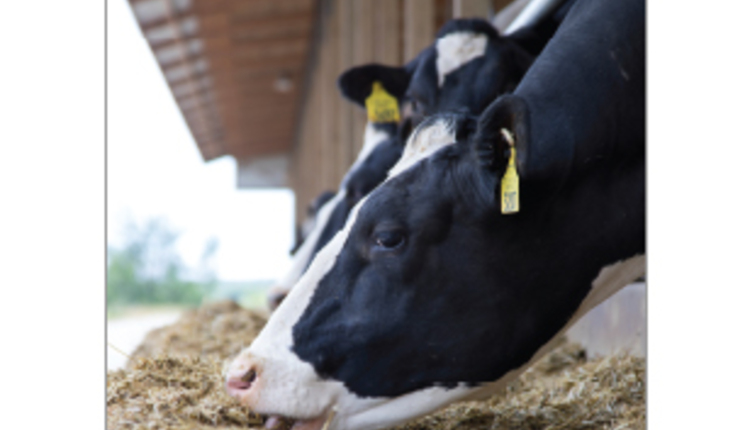
Dairy producers are aware of the importance of feeding quality colostrum within the first two hours of birth (and surely within six hours). Colostrum provides immunity as antibodies including immunoglobulin G (IgG), which is critical for calf survival, reducing health risks, improving growth, and providing bioactive compounds. Cornell University researchers reported bioactive levels in colostrum of compounds including lactoferrin, IGF-1, IGF-2, insulin, and leucocytes.
Another opportunity is using transition milk (also called transition colostrum) in the early days of a young calf’s life, offering important nutrients, improvement and changes in the small intestine, and bioactive compounds. Research papers have been published about feeding transition milk that report valuable research and on-farm results.
What is transition milk?
Transition milk is milk produced in the second to fourth milking after colostrum has been harvested. The table illustrates nutrient changes at each milking compared to colostrum and normal Holstein milk. All values listed are expressed on an as-fed basis, not as dry matter.

It is important to note that despite the decline in nutrients and bioactive compounds found in colostrum, they are still available. Depending on the nutrient level of colostrum initially, cow variation, the amount of milk produced in each milking, and the number of milkings saved, the nutrient value of transition milk will vary.
In Canadian studies, feeding transition milk and milk or milk replacer fortified with a commercial colostrum product compared to control calves showed significant improvement and changes in villi (small finger-like structures in the small intestine), length, and greater diameter of villi surface area for absorption. In another Canadian study, transition milk fed for two days was compared to control calves fed milk replacer and a commercial colostrum substitute.
The feeding of transition milk and colostrum substitute treatments improved the odds of remaining health (measured by days to diarrhea) and odds of survival (measured by mortality). Field studies in Michigan, California, Canada, and Germany reported improvement in average daily gain, lower inflammation and haptoglobin levels, lower levels of scours and respiratory disease, and reduced use of antibiotics.
Two research studies reported the nutrient value of transition milk used in their studies. Canadian researchers listed that pooled transition milk contained 30% fat and 39% crude protein on a dry matter basis. Michigan State researchers reported 26% fat and 42% crude protein on a dry matter basis. Colostrum listed in the table contained 26% fat and 54% crude protein on a dry matter basis for comparison.
Levels of antibodies (IgG) were about half of that in colostrum for the pooled transition milk compared to colostrum in the study. Minnesota researchers reported colostrum contained 3.2% IgG, second milking contained 2.5% IgG, and third milk contained 1.5% IgG (reported on a an as-is basis or liquid basis). Colostrum also contains oligosaccharides, which can improve gut health and tie up pathogenic bacteria.
How long should it be fed?
Studies have fed transition milk for varied time periods. A Canadian field study with 74 herds reported 2 quarts or liters of transition milk plus 4 quarts of pasteurized waste milk. The German study reported 2 quarts of transition milk for three weeks along with pasteurized waste milk. The Michigan State study fed transition milk for three days.
Depending on inventory and number of young calves, a longer treatment period can be beneficial. Transition milk is a valuable source of nutrients and benefits lower gut health.
Do commercial colostrum supplements have an advantage compared to transition milk or the dam’s colostrum? Colostrum supplements have a guaranteed level of IgG from 100 to 175 grams per dose. The source of IgG can be from milk or serum.
Colostrum supplements have advantages, including uniformity in quality compared to variation in transition milk and colostrum. They are also a way to avoid disease risk (such as Johnes and Mycoplasma) found in transition milk and colostrum that is not pasteurized. These products are also convenient and available without delays due to needing to milk the dam. The challenge is the price of commercial colostrum supplements; this can vary from $35 to $50 per dose.
A difference between colostrum supplements and colostrum replacements exists. University of Minnesota researchers indicate colostrum replacements are lower in IgG (25 to 60 grams per dose) and cost ($9 to $18 per dose). Colostrum supplements and replacements can be licensed or non-licensed products.
Options to implement
Transition milk offers advantages in supporting calf health and growth. Several options to accomplish this on your dairy are listed below.
Option 1. Continue to feed transition milk after colostrum from the calf’s dam. If extra transition milk is available, pasteurize and feed it to other young calves, freeze it, or refrigerate it for future use. This option may fit smaller herd sizes with fewer births a week.
Option 2. Larger herds could pool the second, third, and/or fourth collections of transition milk after pasteurization. This option could result in a more uniform product, be used as needed, or be stored in a freezer.
Option 3. The second transition milk (with the highest potential quality) could be handled similar to surplus colostrum that is pasteurized, refrigerated, and frozen. This option captures the highest quality of transition milk after colostrum.
Option 4. Consider purchasing commercial colostrum supplements or replacements and adding the powder to milk or milk replacer. Check the impact of higher dry matter content when adding to milk or milk replacer.
The take-home message about transition milk is that it is a valuable tool that can be used to improve calf performance on your farm. Consider transition milk as it fits into your calf program and labor resources.











